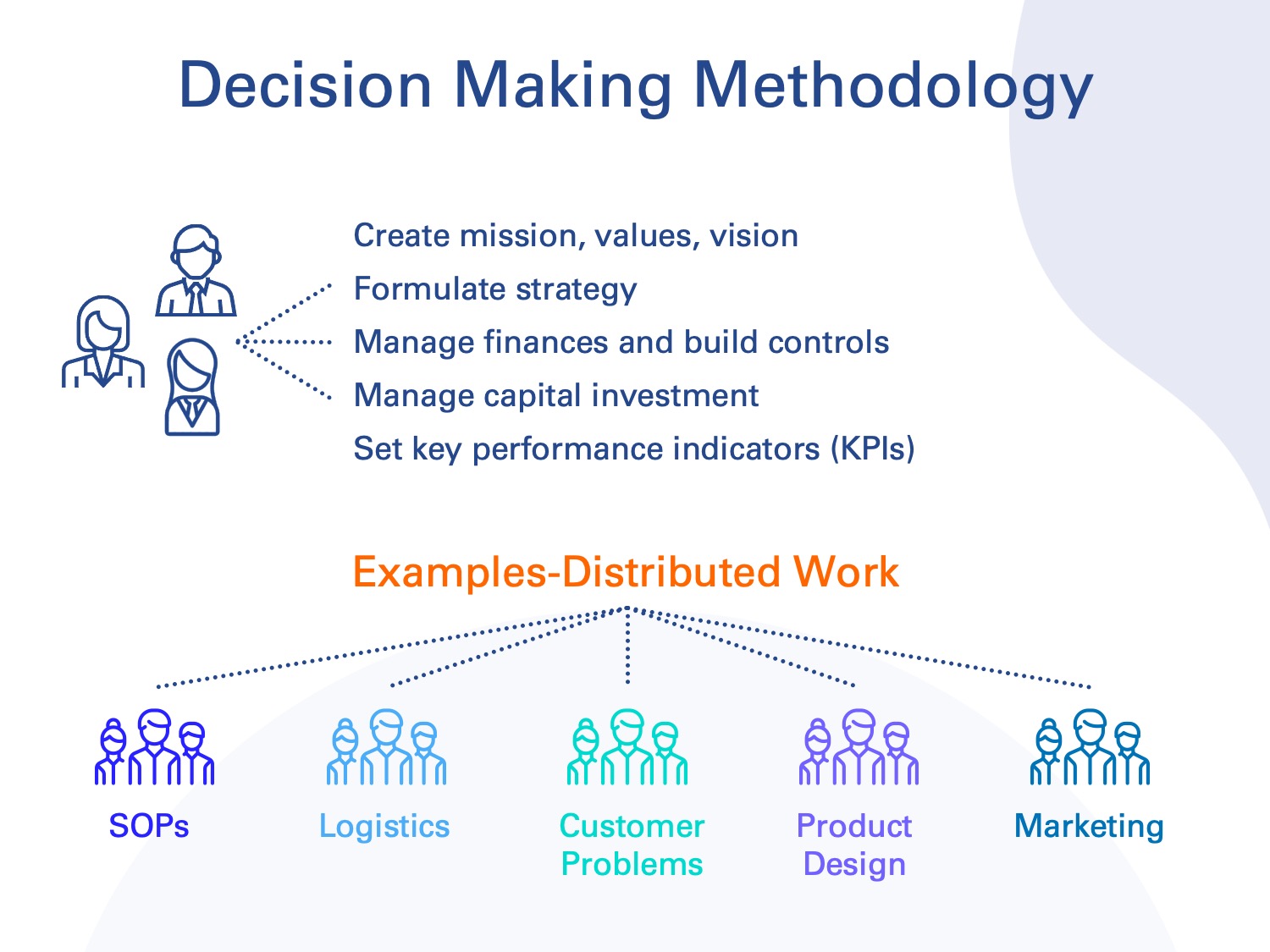How decision making has changed forever

The trend of distributed work was gaining momentum before the pandemic. It seems that nothing can distribute work as quickly as a sudden shift to employees working from home.
Some decisions should be controlled by senior management. As a strategy facilitator, I typically work with the top echelon within a company—often the people with the most experience, patience and emotional intelligence. Yet in many companies, senior managers don’t include others in decision making (or worse, don’t communicate decisions they have made).

To succeed at this intersection in history requires the right blend of centralized and decentralized decision making.
There is a clear and linear relationship between scalability and distributed work. This comes in several forms; it could be empowering mid-management to enter new geographies, developing salespeople to win new customers, or building automation capabilities.
Senior management should craft strategy, manage a company’s capital decisions, and set the tone for culture and values. But daily decisions at the field and customer level should be the responsibility of mid-management. The people closest to the customer are the ones who can make decisions at the speed of change.
To decentralize decision making requires trust and patience. A $30/hour employee might not always make the best decision, but the cost of constraining decision making is often greater than the risks of distributing it. Working with roughly 25 management teams over the last year, I observed that many managers were shocked to find that remote employees were capable of managing themselves.
Here are five keys to striking the right balance of centralized and decentralized decision making:
1. Share more information
With employees in the shadows of a year of seclusion, social unrest and a volatile economy, transparency is more important than ever. The best management teams lead with vision and inspire confidence in their teams. Employees want to know where they are headed and why.
2. Seamless integration
Five years ago, many private companies struggled to integrate data. Their choices were costly ERP systems or homegrown industry systems that lacked utility. Half a decade into cloud computing, today’s office suites (i.e., Microsoft, Google, Zoho, Salesforce) are powerful and configurable.
There is simply no reason that today’s companies should not have integrated systems and data flow without exports and manual manipulation. If every one of your managers does not have information at their fingertips, your organization will be at a competitive disadvantage to those companies who do.
3. Obsess about metrics
There is a tussle within companies on usage of traditional key performance indicators and OKRs (objectives and key results—a methodology that took Silicon Valley by storm). While there are books on execution that offer other descriptions, these methodologies are based on the same premise.
Our narrative focuses too much on which numbers to measure, and not enough on what to do with the metrics we use. They should be the single point of truth, distributed to a wide range of people who can make decisions in real time. Circulating KPIs with financial statements to a handful of people has little value. The entire underbelly of a company should understand what the numbers mean, and be motived and incented by them in a way that changes behavior.
When mid-managers are empowered to make decisions, it’s liberating for a senior management team. A sure-fire way to frustrate employees is to leave the decision making in the hands of a few people, who are overburden and slow to act.
KPIs and OKRs should measure the pulse of the business and be reported frequently. There is simply no reason, other than cultural resistance, for managers not to act on real-time information.
4. Create pods and cross-functional teams
Another trend is the fundamental shift in how teams organize. In-office, teammates in bubbles interacted in person. We see companies organizing around customer segments, away from traditional departments. There is heightened awareness of the need to solve complex problems through projects completed by cross-functional teams.
5. Develop mid-management
As we’ve noted in the past, there was an alarming trend in 2020. Our employee engagement studies with our clients revealed that many managers diverted from career conversations. One-to-ones became safety and operations meetings. As the talent war heats up again, it’s time to refocus on career pathing, professional development training, mentoring and developing future leaders.
As we all consider the ramifications of the hybrid office, we need to reorganize our companies and redistribute decision making. Our employee satisfaction, and service to our customers, can only improve as a result.
Category: Communication & Alignment
Tags: Decision Making

